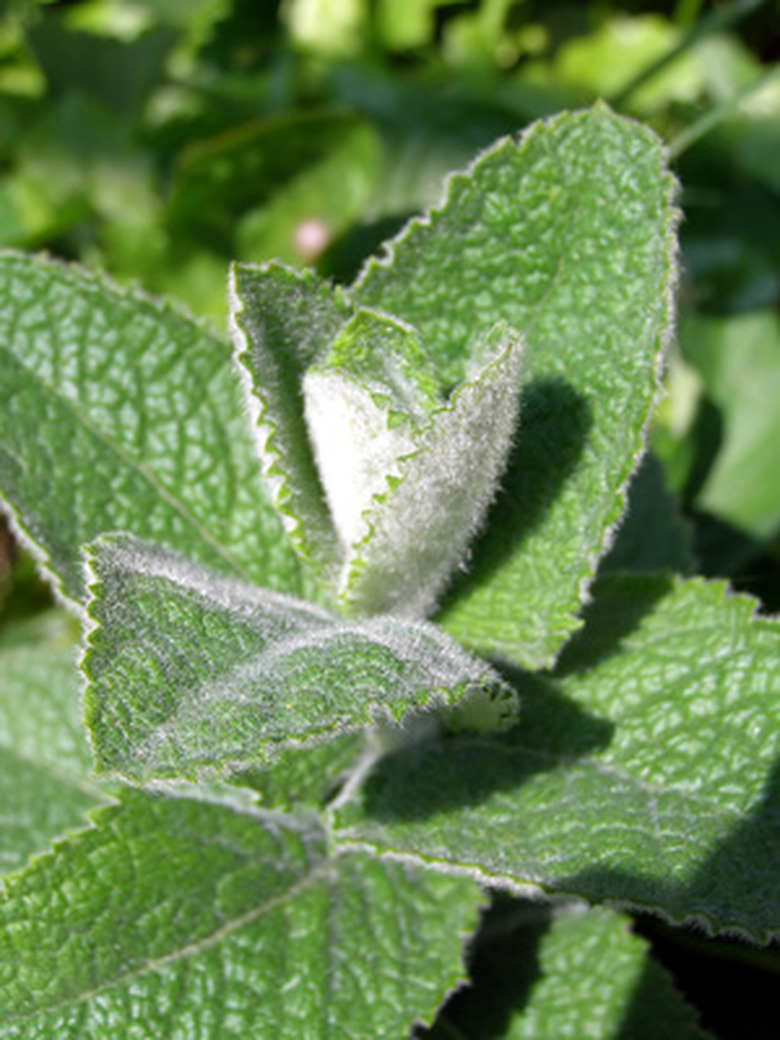What Attacks Mint Plants?
The perennial herb mint is known for its fresh fragrance and flavor as well as its highly invasive root system. There are over 30 species of mint, the most popular being peppermint and spearmint. Mint is used to flavor toothpaste, candy and tea, and it has been used as a companion plant and acts as a natural repellent for a wide variety of insects. Several insects are not offended by the smell of mint and often attack the herb.
Mint Flea Beetles
The eggs of the mint flea beetle (Longitarsus waterhousei) overwinter in soil and hatch in the early spring. The destructive mint flea beetle larvae tunnel underground and feed on the roots of the mint plant. Adult mint flea beetles appear in June and July and begin eating the leaves of the mint plant, filling foliage with an abundance of small holes. Adult flea beetles mate and the female deposits her eggs in the soil in July and August.
- The perennial herb mint is known for its fresh fragrance and flavor as well as its highly invasive root system.
- Adult mint flea beetles appear in June and July and begin eating the leaves of the mint plant, filling foliage with an abundance of small holes.
Chemical control only works on adult mint flea beetles. Spray plants with a foliar insecticides in early July to control beetles and to prevent females from laying their eggs. Always follow manufacturers instructions when using chemicals. In areas where soil moisture is maintained, the University of Idaho states that the BioVector nematode aids in controlling mint flea beetle larvae.
Cutworms
The spotted cutworm, army cutworm and redbacked cutworm are three types of cutworm that attack mint plants. Cutworms come in a variety of colors from green to black, yellow and tan; larvae are often brown or green. The partially grown larvae of army and spotted cutworms overwinters in the soil and starts feeding on freshly grown mint in the early spring. The redbacked cutworm overwinters as an egg and begins feeding on plants later in the spring. Lack of new growth is the first sign that cutworms have attacked mint plants.
- Chemical control only works on adult mint flea beetles.
- The partially grown larvae of army and spotted cutworms overwinters in the soil and starts feeding on freshly grown mint in the early spring.
According to the University of Iowa, newly planted mint fields should be treated with insecticide if there is one cutworm per square foot; in older mint fields use insecticides only when there are more than five cutworms per square foot. Always follow manufactures instructions when using chemical insecticides.
Two-Spotted Spider Mite
Insufficient moisture is the main reason two-spotted spider mites attack mint plants. Grown spider mites overwinter in soil and dead, rotting plant matter. Two-spotted spider mites attack the leaves of the mint plant and leave tiny silvery spots on the leaves. The mint leaf withers and eventually drops from the plant. Spider mites multiply quickly and must be controlled as soon as possible to stop further damage to mint plants.
- According to the University of Iowa, newly planted mint fields should be treated with insecticide if there is one cutworm per square foot; in older mint fields use insecticides only when there are more than five cutworms per square foot.
- Grown spider mites overwinter in soil and dead, rotting plant matter.
Controlling two-spotted spider mites is difficult. According to the University of Idaho, the lacewing, thrip and black lady beetle are natural predators of the spider mite that make their home in mint fields, but there normally aren't enough natural predators to keep up with the rapid reproduction of spider mites. Spraying mint with insecticidal soaps helps control the spider mite. Always follow the manufacturers instructions when using insecticidal soap.
